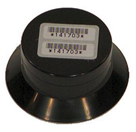If you’ve never heard of radon before, you’re not alone. But, learning about it is important to protect you and your family. Radon is the second leading cause of lung cancer, and homes with elevated levels of radon gas are more prevalent in our region compared with many other parts of Ontario.
Radon is a naturally occurring radioactive gas that is released from the soil. It seeps into buildings through cracks in the foundation. Once inside your home, it can accumulate, and the higher the concentration, the greater the risk of developing lung cancer.
In a Canada-wide study, Health Canada found not only that homes across the country have dangerous levels of radon, but also that the percentage of homes with high radon levels is above average in the Wellington-Dufferin-Guelph area: locally, 15% of homes tested above the Canadian guideline compared with 7% of homes nationwide.
Because radon is a colourless, odourless gas, you can’t see it, smell it or taste it. That means you don’t know how much radon is in your home – unless you test.
Do a test. Know your risk.
Testing your home is easy. In fact, it’s so easy that you can do it yourself with a kit that doesn’t require power, doesn’t have any buttons or screens to program, and is completely safe for anyone to use in their home. Using a certified test kit is important, so you should check the list of radon testing devices approved by C-NRPP before purchasing your kit to ensure it is on the list. Long-term testing devices fit in the palm of your hand and typically look like this:


Visit a library and borrow a radon screening tool for free.
Did you know that some libraries offer digital radon detector loan programs? Digital radon detectors are a great way to complete an initial radon screening test in your home for free.
Local libraries that offer Digital Radon Detector Loan programs include:
Regardless of whether you buy a long-term radon test kit or check out a digital radon detector from your local library, the best time of year to test is late fall and winter. These are ideal times to test your home because windows and doors are generally closed, and radon levels tend to be higher.
Once you have your test results, you can compare them with the Health Canada guideline, which recommends remediating (taking steps to repair) if indoor radon levels are above 200 Bq/m3. For more advice on testing and remediating your home, visit Take Action on Radon.
If your home has high radon, you have options. The cost of remediation is comparable to other home repairs, such as replacing a furnace or air conditioner, and well worth the peace of mind that comes with knowing you’ve fixed the problem.
Radon can pose real risks, but you have the tools to keep your home and family safe!
